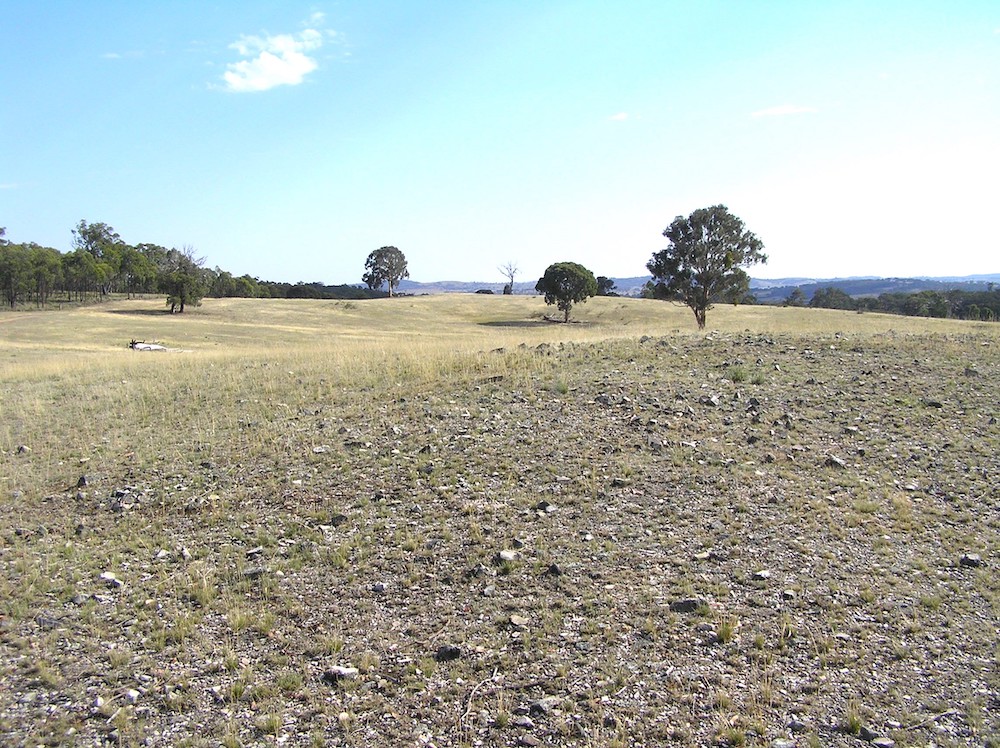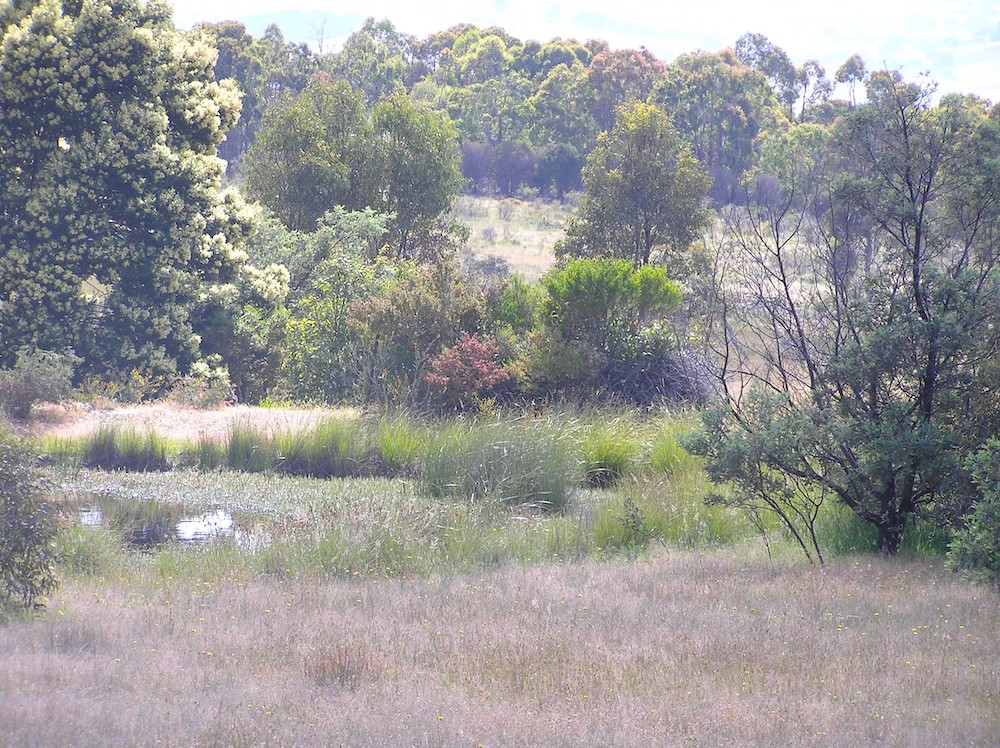When we took over the care of our property in 2005, the western portion was a bleak prospect. Past clearing had spared only a very few scattered trees. The superphosphate and sub-clover that was applied in the 1970s, plus the requisite fifty wethers, ensured that tree regeneration was kept in abeyance. The Millenium drought was in full swing, which added to the desolation. Much of the ground layer was grazed down to mineral soil. We named this area ‘West End’ reflecting its location, and referencing the suburb of Brisbane where we had lived in the previous decade.
We knew that the phosphorus had subsided back to native soil levels and that tree regeneration was likely after the removal of livestock, providing the remaining trees were healthy. But the large Red Box were carrying heavy loads of mistletoe, which, while important to the ecosystem, were likely to soon kill these critical trees. In an act of desperation, Jon climbed the beleaguered trees in his Dunlop Volleys using a rope ladder and a ‘saw on a stick’, and removed all the accessible mistletoes. I dragged the leafy mistletoe carcasses to a small gully which assisted in rapid stabilization of some eroding areas. The trees survived and thrived.
West End in 2005 in its original state. ‘Top Dam’, where our first planting took place, is the small dark area near the tree located furthest left in the frame.
Planting in the drought seemed foolish, but we started at a very small scale, around an existing small dam (Top Dam, pictured), so we could water the tubestock in the dry early years.
Over the next 15 years there have been five stages of revegetation, each one differing in its approach. Our aim has been to create an open woodland, with a diverse perennial ground layer, and trees and shrubs at different densities to provide structural diversity, suitable for both grazing and native fauna habitat. Nature itself has done much of the work, providing abundant eucalypt regeneration and a strong, drought-tolerant, erosion-resistant perennial ground layer, but little in the way of shrubs.
We have been particularly impressed with the positive effects that planting Acacia has had on the microclimate, soil, and understorey diversity, as well as providing excellent habitat for birdlife. Fifteen species of wattle are now established, 12 of which are local and three of which are from the NSW western slopes.
One project has been a ten-year trial to compare the effects of regular burning (with no grazing) and grazing (with no burning) on the ground layer, and to test which regime might be better for increasing plant diversity, and whether burning favours establishment of native herbs.

Top Dam in 2022.
Although we have previously hosted field walks on Gang Gang, none have been on this part of the property. For those interested in seeing the results of the different planting and management approaches, an opportunity to do so is planned for Sunday April 7th. The event, led by Alison Elvin and myself, is titled Restoring vegetation structure and function for climate resilience. It is open to members of all Landcare groups within the Yass Area Network. Your local group can be contacted through the Groups menu.
Written by: Sue McIntyre
_____________________________
Want to see more?
Please join us for a guided field walk by Alison Elvin & Sue McIntyre to see the results of this restoration first hand.
Date: Sun. 7th April 10:00am-1:00pm
Location: just 20 min from Murrumbateman
Details and to register at the link below;
Restoring vegetation structure and function for climate resilience
